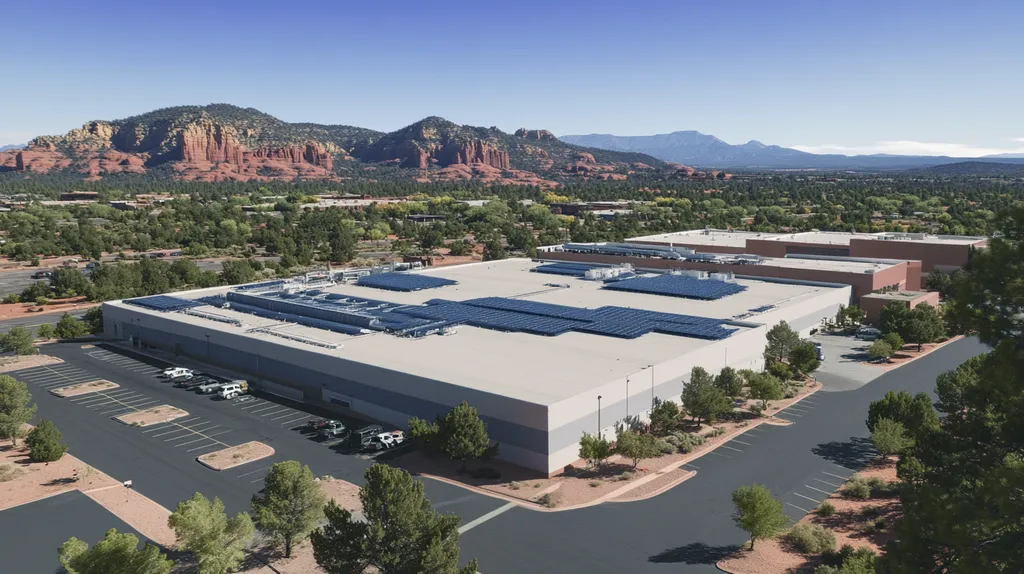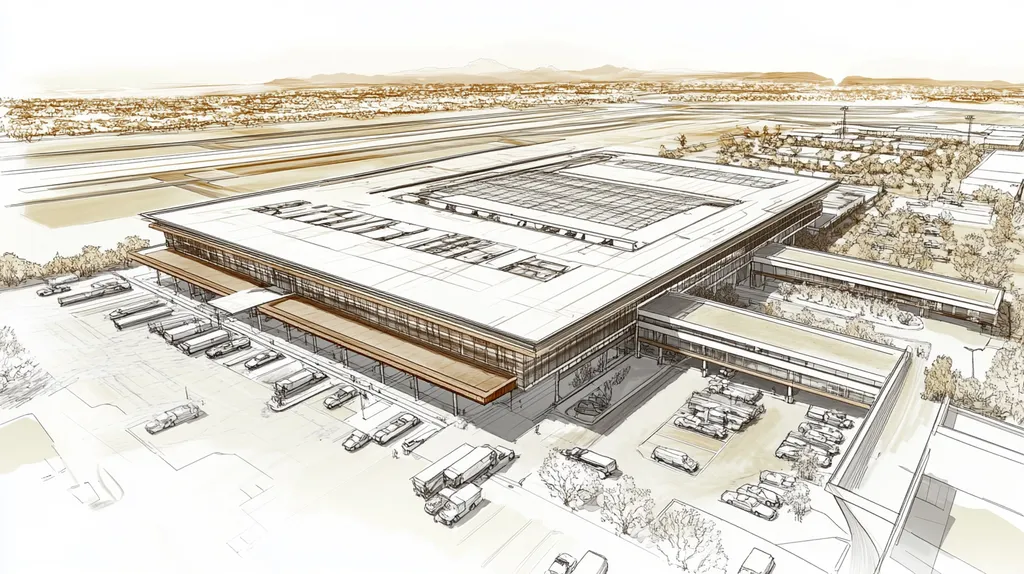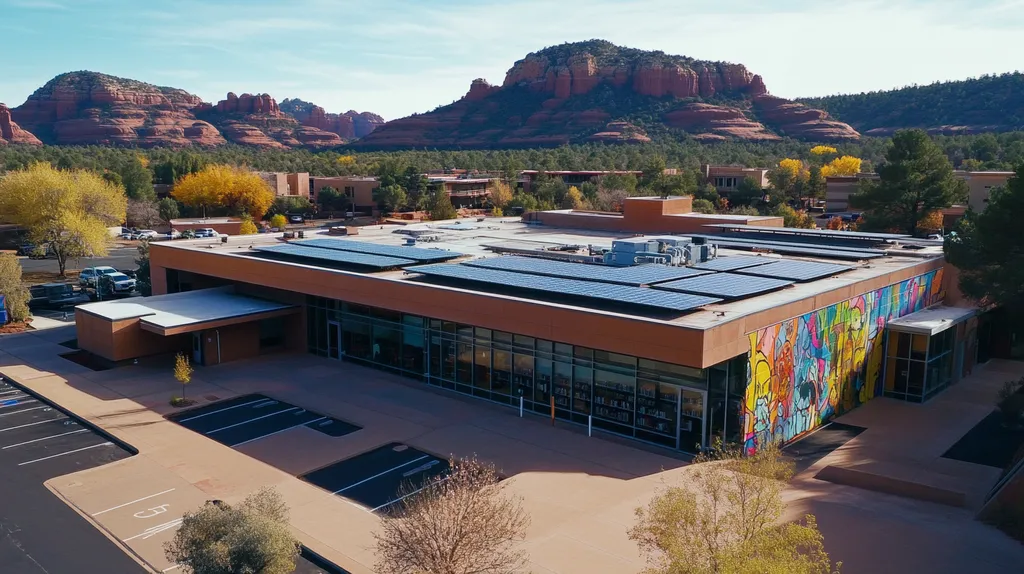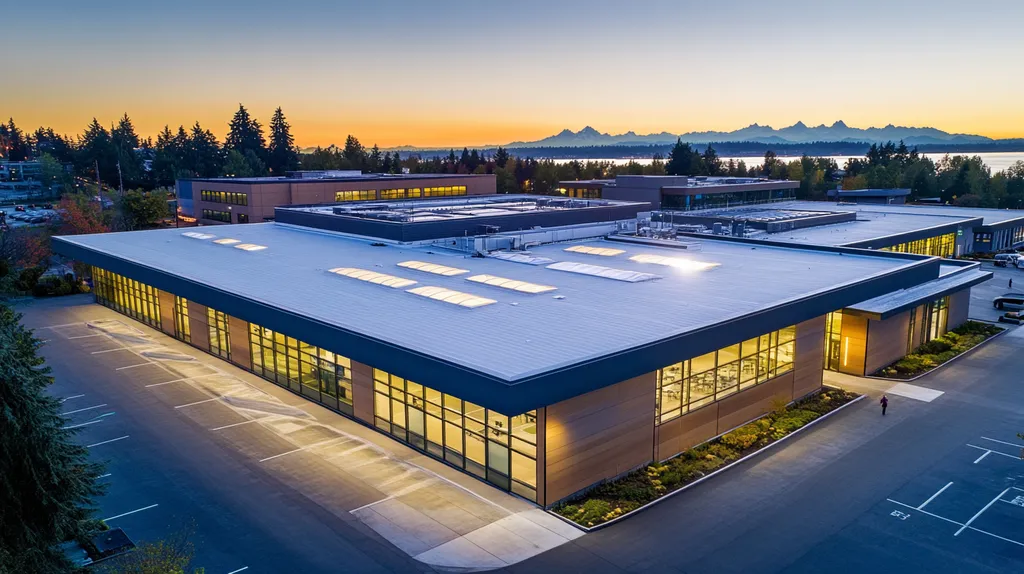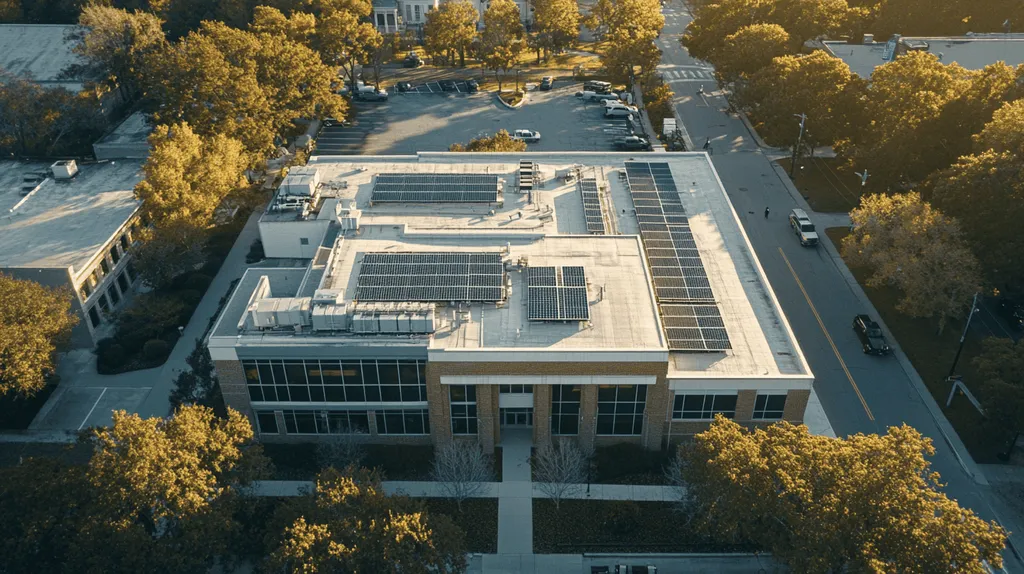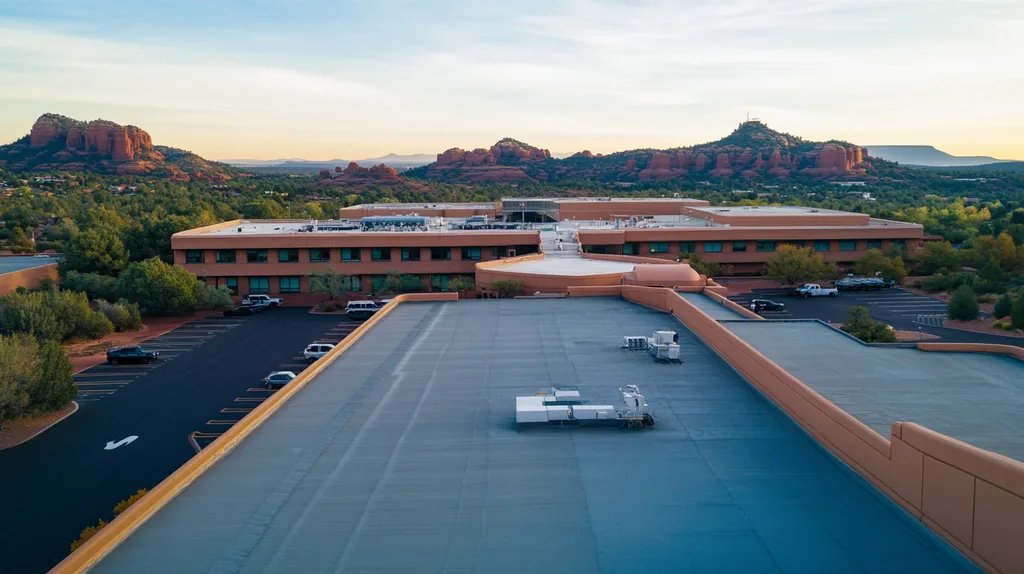Industrial roofing failures cost North American businesses over $3.5 billion annually in repairs, damaged inventory, and operational disruptions – yet 80% of these catastrophic events are entirely preventable through proper maintenance.
The stakes are staggering: a single undetected leak can result in hundreds of thousands in equipment damage while compromising worker safety and production schedules.
This comprehensive guide separates maintenance myths from evidence-based practices, providing facility managers with proven protocols to protect their roofing investments and prevent costly emergency repairs.
SECTION 1: COMMON MISCONCEPTIONS
Industrial roofing systems protect millions in assets, yet preventable failures continue to plague facility operations. Studies show that over 80% of industrial roofs fail prematurely due to inadequate maintenance practices rooted in misconceptions. These preventable failures not only compromise facility operations but also lead to substantial repair costs averaging $5-7 per square foot when emergency interventions become necessary.
Inspection Frequency: “Set It and Forget It” Myths Debunked
The dangerous notion that industrial roofs require minimal attention after installation continues to result in catastrophic failures. If you wait until a leak happens, then you are more likely to waste a needless amount of money on expensive repairs. Small issues can lead to big problems later down the line, which is why regular roof inspections are essential. (source: Giromax Technology)
Professional inspections should occur at minimum twice annually – typically in spring and fall. These strategic timing points allow facilities to address winter damage and prepare for severe weather seasons.
Post-storm inspections are equally critical, as even minor weather events can compromise roofing components. High winds can loosen fasteners, while hail impacts may not show immediate damage but can accelerate deterioration.
Documentation during inspections creates a valuable performance history that helps predict maintenance needs and validates warranty claims. Without this record, facilities often struggle to prove proper maintenance when seeking coverage for repairs.
Minor Leaks Ignored: The Downside of Complacency
A single drop of water penetrating the roofing membrane can trigger a cascade of costly consequences. What begins as a minor leak often develops into major structural damage, affecting everything from insulation to electrical systems.
Water infiltration through even microscopic openings can reduce insulation R-value by up to 25% in affected areas. This degradation leads to increased energy costs while creating ideal conditions for mold growth.
The financial impact compounds rapidly when leaks affect operational areas. Equipment damage, inventory losses, and production interruptions can easily exceed $100,000 per incident in manufacturing facilities.
Modern leak detection systems can identify moisture intrusion long before visible damage occurs. This technology, combined with prompt repairs, prevents minor issues from escalating into major failures.
Debris Management: Misunderstanding Risk and Responsibility
Accumulated debris represents more than just an aesthetic concern – it’s a primary catalyst for premature roof failure. Organic matter retains moisture, accelerating membrane degradation and creating perfect conditions for vegetation growth.
Weight distribution becomes critical when debris accumulates, especially during rain events. Just one cubic foot of saturated leaves can weigh over 40 pounds, creating stress points that compromise structural integrity.
Drainage systems require particular attention, as blocked pathways can result in ponding water. Just two inches of standing water adds 10 pounds per square foot of load to the roof structure.
Implementing a monthly debris removal schedule, combined with post-storm cleanings, prevents these cumulative effects. This proactive approach costs significantly less than addressing water damage or structural failures.
SECTION 2: PRACTICAL IMPLICATIONS
Industrial roof failures cost facility owners over $3 billion annually in repairs, equipment damage, and operational disruptions. Behind these staggering numbers lie three critical maintenance challenges that demand immediate attention: hidden moisture deterioration, compromised drainage systems, and deferred repairs. Understanding these issues isn’t just about protecting an asset – it’s about safeguarding entire operations and preventing catastrophic failures that can shut down facilities.
Undetected Moisture: Silent Threats to Structural Integrity
Moisture infiltration represents the most insidious threat to industrial roofing systems, often causing extensive damage long before visible signs appear. A single square foot of saturated insulation can reduce thermal efficiency by up to 40% while accelerating structural deterioration.
Advanced moisture detection technology reveals that up to 25% of industrial roofs harbor concealed water damage. These hidden moisture pockets create ideal conditions for rust formation in metal decking and rapid deterioration of fastening systems.
The impact extends beyond the roofing assembly itself. Trapped moisture leads to premature aging of building materials, compromises fire-retardant properties, and creates dangerous slip hazards during maintenance activities.
Implementing systematic moisture surveys using infrared technology and core sampling can identify problems months before visible leaks appear. This proactive approach typically saves facilities $4-6 per square foot in avoided emergency repairs.
Drainage Failures: The Domino Effect on Roof Lifespan
Compromised drainage systems trigger a cascade of structural problems that can reduce a roof’s functional lifespan by 40-60%. Each inch of standing water adds 5.2 pounds of weight per square foot, creating stress that compounds over time.
Drainage failures often begin at membrane seams and penetration points, where thermal cycling causes microscopic separations. These small defects rapidly expand under hydrostatic pressure, allowing water to migrate far from the original entry point.
Modern industrial roofs require precisely engineered drainage paths that account for deck deflection, thermal movement, and local rainfall patterns. Even minor deviations from optimal slope can result in ponding that accelerates membrane degradation.
Regular drainage assessment programs must include evaluation of internal drain lines, scupper capacity, and overflow systems. Preventive cleaning of these components costs roughly 80% less than emergency drain clearing services.
Missed Repairs: Escalating Costs from Procrastination
The financial impact of deferred maintenance follows a predictable multiplication pattern. A $500 repair left unaddressed typically escalates to $5,000 within 6-12 months as surrounding materials deteriorate and damage spreads.
Critical connection points between roof sections become particularly vulnerable when minor damage is ignored. These joints experience the highest stress during thermal cycling and wind events, making timely repairs essential to prevent system-wide failures.
The cost multiplier effect becomes even more severe when deferred maintenance allows water to penetrate multiple roofing components. What begins as a simple membrane patch can evolve into full section replacement when underlying materials become compromised.
Documentation shows that facilities implementing immediate repair protocols spend 70% less on overall maintenance compared to those operating on a reactive basis. This dramatic cost difference underscores the importance of addressing even minor issues promptly.
SECTION 3: COST OF MISINFORMATION
Misinformation about industrial roofing maintenance extracts a staggering toll on facility operations, with direct replacement costs often exceeding $1 million for large industrial facilities. The financial impact extends far beyond the roof itself, triggering a cascade of interior damage and operational disruptions that can cripple businesses. When facility managers base decisions on common misconceptions, they unknowingly set in motion a chain of events that compromises both structural integrity and bottom-line performance.
Premature Roof Replacement: The Real Price of Neglect
Neglect of preventive maintenance dramatically accelerates roof system deterioration, forcing replacements years before their intended lifespan. A properly maintained industrial roof should last 20-25 years, yet many require complete replacement in less than 12 years due to inadequate upkeep. (source: FacilitiesNet)
The financial implications of early replacement are severe, with costs ranging from $7-12 per square foot for basic systems to over $20 per square foot for specialized installations. This translates to replacement costs of $700,000 to $2 million for a typical 100,000-square-foot industrial facility.
Emergency replacements, often necessary when maintenance is ignored, can inflate these costs by 30-50% due to expedited materials, overtime labor, and production shutdown requirements. These urgent interventions frequently require temporary solutions that further increase long-term expenses.
The compounding effect of neglect means that each year of deferred maintenance typically reduces roof life expectancy by 2-3 years. This acceleration creates a devastating impact on capital planning and facility budgets.
Hidden Interior Damage: Compounded Repair Expenses
When roofing systems fail, the damage to interior spaces often exceeds the cost of roof repairs by 300-400%. Water infiltration creates a domino effect of deterioration that impacts everything from structural steel to electrical systems.
Moisture migration through even minor breaches can saturate insulation, corrode fasteners, and compromise fire-retardant materials. These hidden processes often continue for months before visible signs appear, making remediation increasingly complex and costly.
Equipment damage presents another significant risk, with a single roof leak potentially causing hundreds of thousands in losses to sensitive manufacturing or processing equipment. The cost to replace or repair water-damaged machinery often dwarfs the expense of proper roof maintenance.
Mold remediation adds another layer of expense, with cleanup costs starting at $15 per square foot and often requiring facility-wide containment protocols. These interventions frequently force partial or complete operational shutdowns.
Business Disruption: The Ripple Effect of Roof Failures
The operational impact of roof failures extends far beyond direct repair costs, creating ripple effects throughout the organization. Production delays, damaged inventory, and compromised worker safety conditions can quickly escalate into six-figure losses.
Customer relationships suffer when facilities can’t maintain delivery schedules due to roof-related shutdowns. Just 24 hours of unplanned downtime can result in contract penalties, lost orders, and damaged market reputation.
Insurance premiums typically increase 15-25% following major roof-related claims, creating a long-term financial burden. These elevated rates often persist for 3-5 years, even after repairs are completed.
Employee productivity drops significantly when working in buildings with compromised roofing systems. Poor temperature control, excessive humidity, and concerns about structural safety can reduce operational efficiency by up to 30%.
SECTION 4: REALITY CHECK
Industrial roofing maintenance isn’t just about preventing leaks – it’s about protecting millions in facility investments and operations. Studies show that facilities implementing comprehensive maintenance programs extend roof life by 50-75% while reducing emergency repair costs by over 90%. Without proper maintenance protocols, even the most robust roofing systems deteriorate rapidly, leading to catastrophic failures that can shut down operations and compromise worker safety.
Bi-Annual Inspections: Minimum Standard, Not Overkill
Semi-annual inspections represent the absolute minimum frequency needed to protect industrial roofing investments. These critical evaluations identify developing issues before they escalate into system-wide failures that can cost hundreds of thousands in emergency repairs.
Spring inspections focus on winter damage assessment, examining membrane integrity, seam conditions, and drainage systems. This timing allows facilities to address cold-weather deterioration before summer heat stress begins.
Fall evaluations concentrate on preparing roofing systems for severe weather seasons. These inspections emphasize structural integrity, membrane attachment, and drainage capacity to ensure the roof can handle increased loads.
Post-storm assessments supplement these scheduled inspections, as even moderate weather events can compromise roofing components. High winds, hail impacts, and debris accumulation require immediate evaluation to prevent progressive damage.
Professional Expertise: Why Qualified Inspectors Matter
Certified roofing professionals bring specialized knowledge that dramatically improves inspection effectiveness. Their expertise in current materials, installation methods, and failure patterns allows them to spot early warning signs that untrained observers often miss.
These experts utilize advanced diagnostic tools like infrared scanning and moisture mapping to detect hidden problems. Such technology-driven assessments can identify moisture infiltration months before visible damage appears.
Professional inspectors understand the complex interactions between different roofing components and environmental factors. This systems-level knowledge helps prevent cascading failures that often result from addressing symptoms rather than root causes.
Additionally, qualified inspectors provide detailed documentation that supports warranty compliance and insurance claims. Their reports serve as critical evidence when pursuing coverage for repairs or replacements.
Record Keeping: Documentation as a Decision-Making Tool
Comprehensive maintenance records transform reactive repairs into strategic asset management. Detailed documentation creates performance histories that reveal deterioration patterns and help predict future maintenance needs.
Digital tracking systems now allow facilities to map problem areas, schedule maintenance intervals, and track repair costs with unprecedented precision. This data-driven approach optimizes resource allocation and prevents duplicate efforts.
Historical records prove invaluable during warranty claims and insurance disputes. Without proper documentation, facilities often struggle to demonstrate maintenance compliance, potentially voiding coverage for major repairs.
Performance tracking also enables facilities to evaluate contractor effectiveness and material longevity. This information supports better decisions about future repairs and eventual replacement strategies.
SECTION 5: EVIDENCE-BASED ALTERNATIVES
Every industrial roof represents a critical line of defense protecting millions in facility assets. Research demonstrates that implementing evidence-based maintenance protocols reduces lifetime roofing costs by up to 70% while extending service life by decades. Yet many facilities continue gambling with reactive approaches, leading to catastrophic failures that could have been prevented through proven maintenance strategies.
Proactive Cleaning: Best Practices for Debris and Drainage
Debris accumulation represents the single most preventable cause of premature roof failure, with organic matter creating perfect conditions for membrane degradation. Just six months of neglected maintenance can reduce a roof’s functional lifespan by 2-3 years through accelerated deterioration.
Professional cleaning protocols must address three critical zones: membrane surfaces, drainage pathways, and perimeter areas. Each zone requires specialized equipment and techniques to remove debris without compromising roofing components.
Monthly inspections of drainage systems prevent the cascading failures that occur when water cannot properly evacuate. Even partial blockages can create hydrostatic pressure that forces water through microscopic openings in the membrane.
Implementing systematic cleaning schedules, particularly before and after severe weather seasons, prevents the compounding damage that occurs when debris accumulates. These preventive measures cost 80% less than addressing water damage after drainage failures.
Timely Repairs: Addressing Issues Before They Escalate
The financial impact of delayed repairs follows a predictable multiplication pattern, with costs increasing exponentially every month an issue remains unaddressed. What starts as a $500 membrane patch can escalate to a $50,000 structural repair within a single season.
Critical connection points between roof sections demand particular attention, as these high-stress areas often signal developing problems. Thermal cycling and wind forces concentrate at these junctions, making them early indicators of systematic failures.
Modern diagnostic tools can identify developing issues months before visible damage appears. Infrared scanning and moisture mapping allow facilities to target repairs precisely when they’re most cost-effective.
Establishing clear repair protocols, with defined response times for different types of issues, prevents the systematic deterioration that occurs when minor problems are ignored. This proactive approach typically reduces annual repair costs by 60-75%.
Load Management: Protecting Roof Structure from Overburden
Industrial roofs face unprecedented stress from rooftop equipment, environmental loads, and maintenance traffic. Each square foot must support dynamic loads that can vary dramatically throughout the year, making load management critical for structural integrity.
Strategic distribution of rooftop equipment prevents the concentrated stress that leads to premature failure. Even temporary loads during maintenance activities must follow carefully planned paths to prevent membrane damage and structural stress.
Snow load management becomes particularly critical, as just two feet of accumulated snow can add 40-60 pounds per square foot of additional weight. Proper removal techniques prevent the membrane damage that often occurs during emergency snow removal.
Implementing comprehensive load management protocols, including designated maintenance paths and equipment placement guidelines, prevents the cumulative damage that occurs when structural limits are exceeded. These preventive measures cost significantly less than addressing structural failures or membrane damage.
SECTION 6: TEST AND VERIFY
Industrial roofing failures cost facilities billions annually, with catastrophic consequences that extend far beyond repair expenses. Modern testing and verification protocols can identify developing issues months before visible damage appears, preventing costly emergency repairs. Without systematic evaluation methods, even minor defects can escalate into major structural failures that compromise operations and worker safety. Implementing comprehensive testing protocols represents the difference between proactive protection and reactive crisis management.
Infrared Scanning: Detecting Hidden Moisture Intrusion
Advanced infrared technology reveals that up to 40% of industrial roofs harbor concealed moisture damage capable of compromising structural integrity. These hidden pockets of saturation often spread extensively before visible signs appear, making early detection critical.
Professional infrared surveys can pinpoint moisture intrusion with remarkable precision, identifying affected areas down to the square foot. This precision allows facilities to target repairs exactly where needed, dramatically reducing intervention costs.
Modern scanning equipment detects temperature variations as small as 0.2 degrees Celsius, revealing moisture patterns invisible to the naked eye. This sensitivity ensures that developing issues are caught at their earliest, most treatable stages.
Real-time digital mapping creates detailed moisture profiles that track deterioration patterns over time. These progressive assessments help facilities predict maintenance needs and prevent emergency repairs.
Drainage Testing: Confirming Proper Water Flow
Proper drainage testing must evaluate the entire water management system, from membrane surfaces to internal drain lines. Even minor flow restrictions can create devastating hydrostatic pressure that forces water through microscopic openings.
Flow testing under simulated rainfall conditions reveals drainage patterns and identifies potential ponding areas. These controlled evaluations prevent the catastrophic failures that occur when drainage systems fail during actual storms.
Regular drainage verification includes measuring slope adequacy, testing drain capacity, and evaluating seam integrity around drainage components. Metal roof components require particular attention to maintain water-tight conditions around flashings and expansion joints. (source: Facilities Net)
Documentation of drainage performance creates invaluable baseline data for tracking system deterioration. This information proves essential when planning maintenance intervals and budgeting for future improvements.
Material-Specific Protocols: Validating Manufacturer Guidelines
Different roofing materials demand unique testing protocols that align with their specific performance characteristics. Following these manufacturer-specified procedures ensures both optimal performance and warranty compliance.
Testing frequencies must match material-specific degradation patterns, with some components requiring quarterly evaluation while others need only annual verification. This targeted approach optimizes maintenance resources while preventing premature failures.
Performance validation must include physical testing of seams, attachment points, and surface integrity according to manufacturer standards. These systematic evaluations prevent the cascading failures that occur when material-specific weaknesses go unaddressed.
Detailed records of all testing procedures and results protect facilities when warranty claims become necessary. Without this documentation, manufacturers often reject coverage for even legitimate failures.
The Bottom Line
Industrial roof failures cost North American businesses over $3.5 billion annually, yet 80% of these catastrophic events are entirely preventable through proper maintenance protocols.
The evidence is clear: facilities implementing comprehensive maintenance programs extend roof life by 50-75% while reducing emergency repair costs by over 90%.
Every dollar invested in preventive maintenance saves ten dollars in emergency repairs and premature replacement costs.
The choice facing facility managers isn’t whether to maintain their industrial roofs, but rather how quickly they’ll implement the proven protocols that protect millions in assets and operations.
With advanced testing technology, professional expertise, and systematic maintenance procedures now readily available, there’s no justifiable reason to gamble with reactive approaches that inevitably lead to catastrophic failures.
FREQUENTLY ASKED QUESTIONS
Q. What are common misconceptions about industrial roofs?
A. Many believe that once an industrial roof is installed, it requires minimal upkeep. This myth leads to costly failures as minor issues can escalate without regular inspections and maintenance. To prolong service life and avoid expensive repairs, facilities must prioritize proactive maintenance practices.
Q. How can hidden moisture impact my commercial roof?
A. Hidden moisture poses a significant risk to any commercial roof. It can lead to structural integrity issues and energy inefficiencies due to reduced thermal efficiency. Proactive moisture surveys and regular inspections can help identify traps before they cause substantial damage or costly repairs.
Q. What is the cost of ignoring preventive maintenance for industrial roofs?
A. Neglecting preventive maintenance can dramatically escalate costs. A minor issue today can snowball into thousands in repairs later. This neglect often leads to premature roof replacements and comprehensive facility damage, significantly affecting budget allocation for years to come.
Q. How often should I inspect my industrial roof?
A. It’s critical to inspect your industrial roof at least twice a year. Regular inspections ensure that minor issues are detected and addressed before they escalate into costly problems. Post-storm evaluations are also essential, as weather conditions can reveal hidden damages needing attention.
Q. What role does debris management play in roof maintenance?
A. Effective debris management is vital for extending the lifespan of your roof. Accumulated debris not only retains moisture but also adds unnecessary weight, which can compromise the roof structure. Regular cleaning can prevent severe deterioration and save significant repair costs over time.
Q. How does professional expertise enhance roof inspections?
A. Engaging certified roofing professionals for inspections brings deep knowledge of materials and common failure patterns. Their expertise, combined with advanced diagnostic tools, ensures that issues are identified early, ultimately reducing long-term repair costs and enhancing roof performance.
Q. What is a systematic testing protocol for roofs?
A. Systematic testing protocols for roofs include infrared scanning and drainage assessments to detect hidden moisture and confirm proper water flow. By institutionalizing these evaluations, you can prevent costly issues from developing undetected, ensuring longevity and performance integrity of your roof systems.

